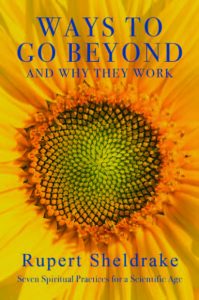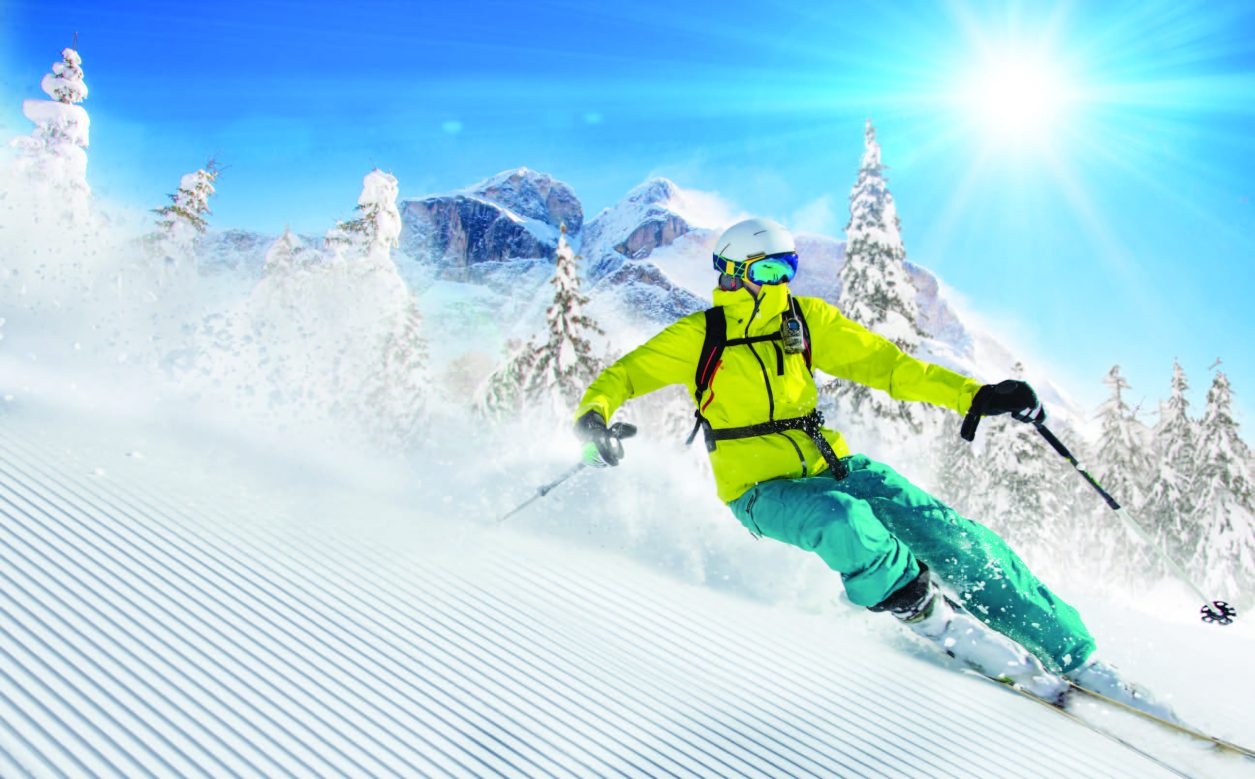Most people do not think of sports as spiritual practices; sports seem supremely secular. Yet in modern secular societies, sports may be one of the most common ways in which people experience the self-transcendence that can come through being in the present.
A meditator may find his mind wandering and only occasionally come back into a full sense of presence, but a football player in an important match is completely in the present, or else he is out of the game. Someone skiing downhill at sixty miles an hour has to be completely focused, as does a surfer on a gigantic wave, or a free climber on a rock face with no ropes.
The philosopher David Papineau, himself a keen sportsman, has thought more about sports than most people, and has summarized his conclusions with admirable clarity: the value of sporting achievement lies in “the enjoyment of sheer physical skill.”
Humans hone their physical abilities and take delight in exercising them. This definition explains why many sports are not games, like skiing, while some sporting skills exist only within games, like topspin tennis backhands. Other sports are based on skills that already occur in everyday life, like running, jumping, rowing, shooting, lifting, and throwing. Papineau concludes, “These ordinary activities turn into sports whenever people start performing them for their own sake, and strive for excellence in their exercise.”
What about the role of competition?
Competition plays an important part in sports, because it enables people to measure themselves against others. But some sports are not directly competitive. Mountaineers may seek to scale a particularly difficult peak, but their achievement is not primarily in competition with other people, more a challenge to themselves.
Although sports are not normally undertaken as spiritual exercises, they can have a range of spiritual effects. These effects include being intensely present, and feeling part of something greater than oneself. Michael Murphy co-founded the Esalen Institute in California in 1962 and was a pioneer of the human potential movement. He was among the first people to point out that sports are one of the most common ways in the modern world in which people experience altered states of consciousness, and even mystical experiences.
Murphy spent a year and a half at the ashram of Sri Aurobindo in Pondicherry, India, and was much influenced by Aurobindo’s evolutionary philosophy, which emphasized not only the spiritual evolution of humanity, but also its physical evolution as part of what he called Integral Yoga. Murphy, himself a keen golfer and marathon runner, came to see that sports are “the yoga of the West.”
In his 1978 book, The Psychic Side of Sports, co-authored with Rhea White, he documented many experiences of sportspeople and athletes that suggested the existence of telepathy between team members, out-of-the-body experiences, extraordinary feats of strength, and altered states of consciousness.
In the flow
Starting in the 1970s, research by positive psychologists showed that people’s best moments are not when they are being passive, receptive, or relaxed. Their most positive experiences usually occur when their body or mind is stretched to the limits in a voluntary effort to accomplish something difficult and worthwhile, summed up in the word flow. To start with, these research studies looked at artists, athletes, musicians, chess masters, and surgeons, because these were people who seemed to spend their time in activities that they enjoyed.
Their most optimal experiences depended on a sense of mastery, or of participation, in a state of flow. People enter flow states through many different kinds of activity, including playing music and dancing, but sports are one of the most common ways in which people find themselves in the flow. Factors that inhibit the state of flow include apathy and boredom, which occur when the challenges are too low for a person’s skill, and anxiety, which occurs when the challenges are too high.
Many traditional spiritual practices emphasize a need to be in the present, which can be achieved through meditation, for example, or through singing, chanting, and dancing. Sports provide an extraordinarily effective way of being fully present. One of their great advantages is that they provide clear goals and feedback. A tennis player knows what she has to do: to return the ball into the opponent’s court and every time she hits the ball, she knows whether she has done well or not. A football team has a literally clear goal, namely to score more goals than the opposing team. In some other areas of human activity, like artistic creativity, the goals are less well-defined or have to be defined by the artists themselves; the goals in sports are much clearer.
Sports also require a high degree of concentration. An avid rock climber, whose day job was as a professor of physics, said, “It is as if my memory input has been cut off. All I can remember is the last thirty seconds, and all I can think ahead is the next five minutes.”
A professional swimmer explained, “When I’ve been happiest with my performance, I’ve sort of felt one with the water and my stroke and everything.” The professional golfer Tony Jacklin revealed, “When I’m in this state, this cocoon of concentration, I’m living fully in the present … I’m aware of every inch of my swing.”
Some sportspeople explicitly describe this are moments of glory that go beyond the human expectation, beyond the physical and emotional ability of the individual. Something unexplainable takes over and breathes life into the known life … call it a state of grace, or an act of faith … or an act of God. It is there, and the impossible becomes possible … the athlete goes beyond herself, she transcends the natural, she touches a piece of heaven and becomes the recipient of power from an unknown source.”
In most religious teachings it is said that no lasting realization can be achieved without many years of steady practice… Many athletes make that kind of commitment to their sport, at least for a part of their lives. The spiritually evocative elements we have discussed—long-term commitment, sustained concentration, creativity, self-integration, being in sacred times and place, and stretching to the limits of one’s capacity—are common to both sport and religious discipline. Those similarities between the two kinds of activity often lead to the same kinds of experience.
Group Flow
In team games, players sometimes find themselves working together in ways that seem to go beyond luck or coincidence, or picking up subtle sensory clues. They seem to be telepathic with each other.
Jayne Torvill and Christopher Dean became the most famous ice-skating dancers of their generation, and were well-known for their extraordinary rapport. Their two bodies “moved as one.” As Dean himself commented, “We are telepathic on the ice. There’s simply no other way to explain it.” Sensory clues must have played a large part in their rapport, but there could well have been more to it, exactly as Dean said.
The famous Brazilian soccer player Pelé went further. It was said of him, “Intuitively, at any instant, he seemed to know the position of all the other players on the field, and to see just what each man was going to do next.” No doubt this was partly a matter of alertness, concentration and good peripheral vision, but more may be involved as well. Telepathy and the normal senses are not mutually exclusive, but may often work together.
Teams are social groups, in which the individual members become like a single organism to achieve common goals, including the scoring of literal goals. The bonds between them can serve as channels for telepathic communication, as in other social groups. But not all individuals are bonded effectively, and not all teams function well as organisms. Even within a well-established team, whose members have had much shared experience, this state may come and go. It comes as a contagious confidence spreads through the team; it goes when the members are tired or demoralized. Michael Novak, a perceptive writer about sports, expressed it as follows:
When a collection of individuals first jells as a team, truly begins to react as a fiveheaded or eleven-headed unit rather than as an aggregate of five or eleven individuals, you can almost hear the click: a new kind of reality comes into existence at a new level of human development…For those who have participated in a team that has known the click of communality, the experience is unforgettable, like that of having attained, for a while at least, a higher level of existence.
A greater understanding of the psychology of sports is itself helping to drive the evolutionary process. In highly competitive events, very small improvements in performance can give people an edge over their competitors, and some sports training programs now include meditation, “inner-game” visualization techniques, and the deliberate cultivation of flow experiences, because these can lead to the enhancement of performance.
The Flow of the Spirit
How can we understand the spiritual experiences that many people have when engaged in sports? Part of this effect depends on being in the present, rather than being taken out of it by worries, anxieties, regrets about the past, and other kinds of rumination. Meditation can help in the achievement of a state of presence, but sports often do so quicker and more effectively. But they do so in a different way.
The spiritual experiences that occur during meditation are often described as being beyond time and space. They are not so much an awareness of change as an awareness of a timeless ground of being. By contrast, in sports, people experience being in the flow, literally in a process of movement. This corresponds to a different aspect of spiritual reality. In many traditions there are three-fold models of spiritual reality: a ground of being, a principle of form, and a principle of energy and bliss.
One Hindu version of this trinity is called sat-chit-ananda, being-consciousness-bliss. In the Christian Holy Trinity, the Father is the ground of being, the Son or Logos the source of form, and the Holy Spirit the principle of flow and energy. Whereas meditation can lead to an experience of connection with the ground of being, or sat, sports are more related to experiences of flow or spirit, or ananda, which are inherently blissful.
At the physiological level, many aspects of sports that enable people to experience states of bliss or self-transcendence are associated with increased levels of hormones, such as adrenaline and testosterone, and with increases in levels of neurotransmitters in the brain, such as dopamine. Similar changes occur in many other animal species, including rats, when they are engaged in challenging physical activities.
This does not mean that the spiritual side of sports is simply biological, as opposed to spiritual. If nonhuman animals show similar physiological changes to humans when they are engaged in physical activities, they may also have spiritual experiences. Do hawks soaring in the sky experience the thrill of speed? Do dolphins leaping through the bow waves of boats experience joy in their freedom of movement? Do predators running at high speed while chasing their prey animals experience a sense of presence in the flow? Are they “in the zone”?
I think that the answer to these questions is probably “yes.” Nonhuman animals may well have experiences of being in the flow. In fact, some animals may have them more often and more intensely than humans, because they are not subject to the same distractions of thought, worry, and egotism. And many animals seem to play for the joy of playing.
Some people may disagree, and seek to confine spiritual experiences to human beings. But if a more-than-human consciousness underlies not just human nature but all nature, then spiritual experiences may be very widespread in the natural world. Many species of animals may be able to participate in the joy or bliss of the spiritual realm. Humans may differ from many other species of animals in their ability not to be in the flow, by being preoccupied with worries, ruminations, and self-centered fantasies. As practitioners of martial arts realized long ago, the physical practices of sport can help humans achieve a unity of mind and body that comes naturally to nonhuman animals, but from which we are often alienated.
Reprinted with kind permission from Ways to Go Beyond and Why They Work: Seven Spiritual Practices for a Scientific Age, by Rupert Sheldrake, published by Monkfish Book Publishing Company, Rhinebeck, NY.

 Dr. Rupert Sheldrake is a biologist and the author of more than ninety technical papers and fourteen books, including Science Set Free. After studying at Cambridge and Harvard Universities, he worked in Hyderabad, India, as principal plant physiologist at the International Crops Research Institute for the Semi-Arid Tropics, and lived for two years in the Benedictine ashram of Father Bede Griffiths. From 2005 to 2010, he was director of the Perrott-Warrick Project for the study of unexplained human and animal abilities, funded by Trinity College, Cambridge. He is currently a Fellow of the Institute of Noetic Sciences in Petaluma, CA, and of Schumacher College in Dartington, Devon, UK. He lives with his wife Jill Purce, with whom he has two sons.
Dr. Rupert Sheldrake is a biologist and the author of more than ninety technical papers and fourteen books, including Science Set Free. After studying at Cambridge and Harvard Universities, he worked in Hyderabad, India, as principal plant physiologist at the International Crops Research Institute for the Semi-Arid Tropics, and lived for two years in the Benedictine ashram of Father Bede Griffiths. From 2005 to 2010, he was director of the Perrott-Warrick Project for the study of unexplained human and animal abilities, funded by Trinity College, Cambridge. He is currently a Fellow of the Institute of Noetic Sciences in Petaluma, CA, and of Schumacher College in Dartington, Devon, UK. He lives with his wife Jill Purce, with whom he has two sons.




















